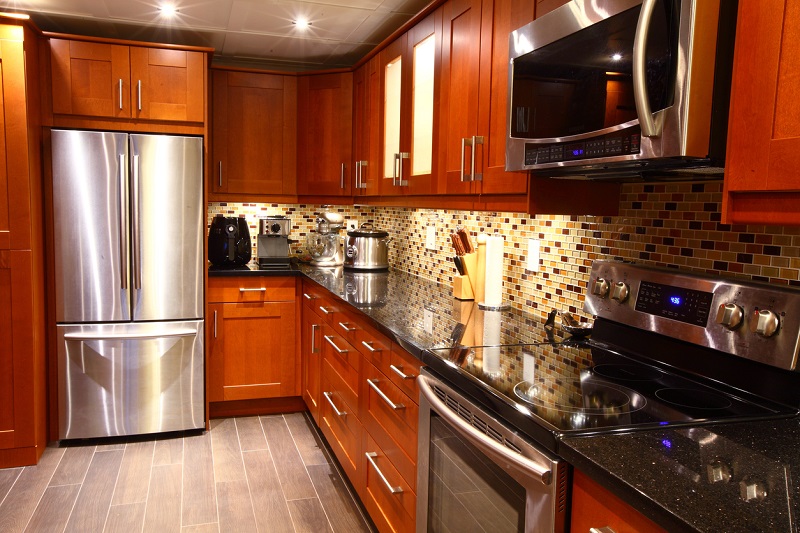 What comes to mind when you think about the kitchen of the future? Robotic servers? Automated cleanup?
What comes to mind when you think about the kitchen of the future? Robotic servers? Automated cleanup?
Sci-fi imagery aside, the kitchen is likely to keep its status as the household gathering space and hub for entertaining. But certain elements will trend toward personalization, and we’re likely to see both expanded and more specialized roles for appliances.
We recently spoke with two kitchen designers, Loretta Willis, Principal of Loretta’s Interior Design in Alpharetta, Ga. and Andrea Edwards, owner of CRP Design in Oklahoma City, to peer into the future and speculate on what the future might bring for kitchen design and appliances. Here are some of the trends they expect to see, both in the near and more distant future:
Personalization: Certain elements of the kitchen will be customized for very specific uses, depending on daily habits. That might mean a pull-out refrigerator drawer for certain easy-to-prepare breakfast or lunch foods, for example. It could become common to see more than one of certain appliances in kitchens, all part of a trend toward kitchen personalization. “Under-counter refrigerator drawers are a big trend,” Willis says. “It’s convenient and you don’t need to have everything in one place. Let’s say there’s a zone for food prep and cooking. You might have an under-counter drawer for things you tend to prepare daily. You might have a refrigerator drawer that just has water, soda or juice. The kids can go there—it’s so convenient. You still need your large refrigerator, but it doesn’t have to be the all-in-all.”
Specialized cooking: Some consumers are looking for ovens that do more than just bake. They’re also looking for the speed and look of commercial appliances. “I think people want the appearance of a professional kitchen,” Willis says. Right now, that look is primarily seen in high-end kitchens, but Willis sees the potential for mid-priced appliances to offer a professional kitchen look, even if they don’t offer all of the same features as their high-end counterparts. Edwards is seeing interest in steam ovens and a decline in built-in fryers, which were popular several years ago. Pizza ovens are also drawing interest. “I‘ve had a lot of specification requests for pizza ovens,” Edwards says. “I could see more of that, a combination oven with a pizza oven integrated.”
Extra, smarter dishwashers: People who like to entertain or who tend to use a lot of dishes might consider installing more than one dishwasher. “I’ve had some clients that had two dishwashers,” Edwards says. “I’ve done some recently where we have one in the kitchen and one in the butler’s pantry. I think we’ll see more of that.” Willis sees potential in dishwashers that automatically adjust to the appropriate cycle, depending on how dirty the dishes are. “I don’t think we’ve imagined, yet, all that can be done. I think we’re definitely going in the direction where one day you might just turn it on and it will choose the cycle.”
Refrigerators doing more: Do you like to listen to music while you cook? Edwards anticipates growth in the popularity of refrigerators with built-in speakers. Screens in refrigerators could also catch on. She also sees the trend toward more refrigerator doors and compartments continuing. “Having more compartments is a big deal,” Edwards says. “The pull-out doors on the bottom are big, and I think that will continue.”
Space built-in for portables: Portable appliances that get heavy use are being built into kitchen designs. “Open shelving is a real trend right now as far as storage of portables,” Willis says. “It’s creating a more open look.” But storage and display of portables will remain dependent on the client’s needs and choice, she says. If you’re going for an open storage plan, Edwards recommends choosing appliances whose colors coordinate with your kitchen.
Coffee stations: Coffee makers are beloved appliances in millions of kitchens. Now, some coffee lovers are expanding their devotion to the caffeinated beverage beyond a coffee maker into an all-encompassing coffee station. “We’re at a point where we’re seeing more coffee stations built in,” Willis says.
What would you most like to see in your kitchen of the future? Share your future kitchen visions in the comments!


